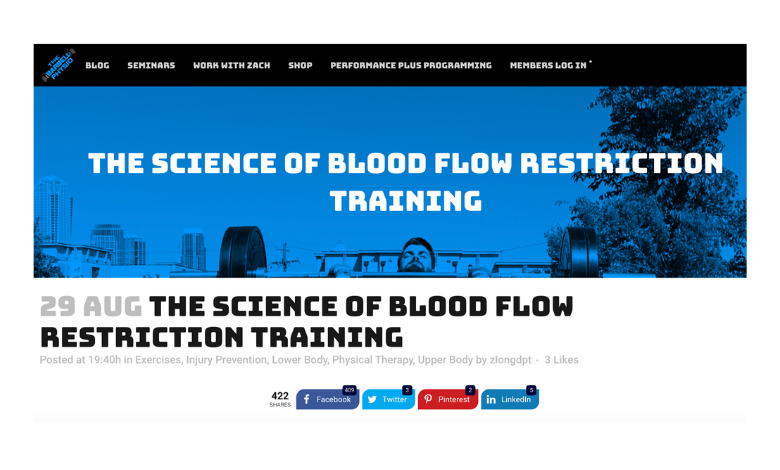The majority of research focuses on looking at strength and hypertrophy gains during BFR training. Research on traditional loading requirements for hypertrophy during weightlifting suggests loads as heavier than 65% of an individual’s one rep max (1rm) must be used to create hypertrophy gains. So a 200lb bench presser must bench at loads greater than 130lbs to create a hypertrophy response. Research on blood flow restriction training shows that loads as low as 20-30% of 1rm can create the same hypertrophy stimulus! This is a very significant difference in two specific training goals:
- The athlete recovering from an injury or surgery that isn’t able to load the injured tissue with heavy weights. BFR will allow us to get strength & hypertrophy gains even at light loads. One systematic review wrote, “Compared with low-load training, low-load BFR training is more effective, tolerable and therefore a potential clinical rehabilitation tool.”
- The athlete already doing a lot of heavy lifting that needs extra hypertrophy work but can’t tolerate adding more heavy volume to their program.

Comparison of traditional high-intensity resistance exercise (HIT) to BFR training and low-intensity training (LI)

Comparison of traditional high-intensity resistance exercise (HIT) to BFR training and low-intensity training (LI)


